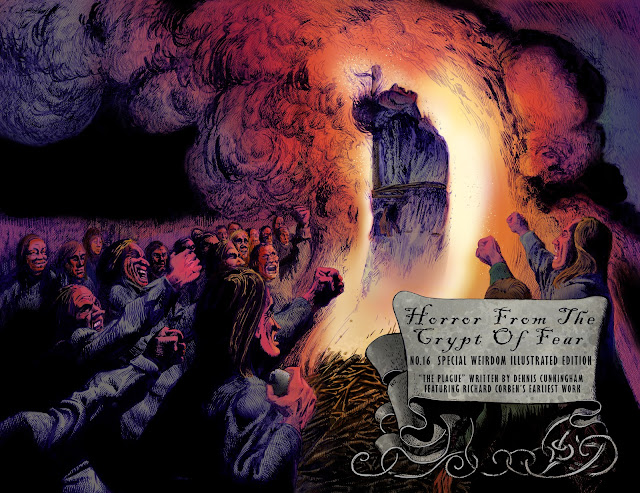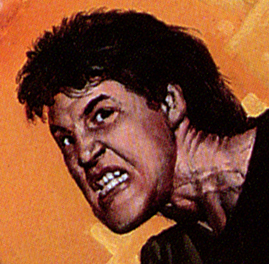[1] Chicago Examiner, August 14, 1910
TWO OBITUARIES:
T. E.
Powers, 69, Noted Cartoonist
Long
Beach Resident
Had
Been with Hearst
For
Nearly 40 Years
Special
to the Brooklyn Eagle
Long
Beach, Aug. 14, 1939 —
[2] Chicago Examiner, May 8, 1912
T.E. Powers, 69, noted cartoonist and a member of the
Hearst organization for nearly 40 years, died early today after a long Illness
at his home, 352 W. Pine St. here. He had been ailing for more than two years.
Mr. Powers, whose political cartoons attracted wide
attention throughout America, was a native of Milwaukee. He began drawing at a very
early age. His first newspaper work was in Chicago on Victor Lawson's Dally
News.
After leaving the News he worked on the Chicago Herald. He
came to New York about 1892 and after a brief period on the New York World
became a member of the art department of the Journal.
[3] Chicago Examiner, December 22, 1911
DRAWINGS WON FAME
Almost dally Mr. Powers' simple line pen and ink drawings
on the fads and foibles of the day enlivened the editorial pages of the Evening
Journal and other Hearst newspapers from coast to coast. His cartoons were
reputed to be very effective in combating political corruption and profligacy
and in correcting corporate abuse. Mr. Powers had a keen wit and a sage
philosophy, qualities that he readily transferred into picture editorials.
He was the favorite cartoonist of the late President
Theodore Roosevelt. His own favorite cartoon was one of President Calvin Coolidge
sawing wood.
[4] Chicago Examiner, November 26, 1912
PRIZED COOLIDGE LETTER
One of Mr. Powers' most cherished mementoes was President Coolidge's
request for the original drawing of the cartoon.
The famous “Joy” and “Gloom” figures that embellished many
of his drawings became a sort of trademark for Mr. Powers. The appearance of “Joys”
chasing “Glooms” or vice versa were highly expressive of the spirit of the
cartoon. The fame of the little imps in their field almost equaled that of
Mickey Mouse in another medium of a later day. Early In his career, when Mr. Powers
worked on Chicago newspapers, he became associated with such men as Eugene
Field, George Ade, and John T McCutcheon.
[5] Motion Picture News, January 15, 1916
T. E.
Powers, Famed
Cartoonist,
Is Dead
Today
Pioneer
Political Satirist Member of Hearst
Organization
Nearly 40 Years; 'Joy and
Gloom'
Figures Known Throughout U. S.
(Special
to The Tlmes-Unlon, Albany NY)
NEW YORK, Aug. 14, 1939 — T. E. Powers, famous cartoonist of
the Hearst newspapers, died today at his home, 352 Pine Street, Long Beach,
Long Island. The body tonight was removed to the Stephen Merritt Funeral parlors,
334 Eighth avenue, New York. Funeral services will be held 2 p.m. Wednesday in
the chapel of the funeral parlors and will be followed by cremation at the New
York and New Jersey crematory in Union City, N. J.
[6] Motion Picture News, January 1, 1916
Mr. Powers, ailing for more than two years, celebrated his
69th birthday anniversary July 4.
He was one of the first and most successful of the
political satirists, and his work was known and enjoyed from one end of the
continent to the other.
Although his political cartoons and his caricaturing of
public men probably had been his most effective work, he was most famous for
the little “Joy” and “Gloom” figures with which he enlivened many of his
drawings.
[7] Advertisement, 1912
HEARST MAN NEARLY 40 YEARS
Born in Milwaukee, he had been a member of the Hearst
organization for almost forty years.
Illness forced Mr. Powers to retire several years ago. He
had been treated several times at Harkness pavilion of Columbia University
Presbyterian Medical Centre in New York, and for the last two years had been
confined to his home.
His illness became critical Saturday, and he died in his
sleep early today.
Surviving are his wife, two brothers and a sister.
Mr. Powers was the first political cartoonist to inject a
quality of humor into his drawings and was credited with inaugurating the still
effective practice of attacking and exposing grifters and malefactors in public
office by making them appear ridiculous.
His sly shafts of humor and his biting sarcasm often
wielded more power than columns of editorial copy.
[8] Chicago Examiner, August 21, 1913
FOE OF POLITICAL CROOKS
His simple line drawings were so effective in combatting
political corruption and profligacy, and in correcting physical abuse, that
more than one public plunderer trembled when he saw the famous “T.E. Powers”
signature on a cartoon directed at him.
Almost daily for forty years, his pungent comment, in pen
and ink drawings, on the fads and foibles of the day enlivened the editorial
pages of the Hearst newspapers from coast to coast.
Possessor of a keen wit and a sage philosophy, he had the
ability to transfer these qualities into a biting picture editorial with a few
sure, quick strokes of his pen.
He was the favorite cartoonist of the late former President
Theodore Roosevelt, and his own favorite cartoon was one he drew of the late
former president Calvin Coolidge sawing wood.
[9] Chicago Examiner, 1910
COOLIDGE PLEASED
President Coolidge saw and liked the picture and his
request for the original drawing, on White House stationary, was one of Mr.
Powers’ most cherished mementoes of his long newspaper career.
The famous “Joy” and “Gloom” figures with which he
embellished many of his drawings became a sort of trademark for Mr. Powers, and
the appearance of “Joys” chasing “Glooms” or vice versa, indicated at a glance
the tenor of the event he was picturing.
The appeal of the Powers’ cartoons combine drollery with a
penetrating social criticism and often were as full of indignation as any
editorial, using the irony and satire of caricature, rather than the ringing
phrases of the written word.
He was born in Milwaukee July 4, 1870. At an early age his
parents moved to Kansas City, where young Tom Powers attended school.
[10] Chicago Examiner, May 8, 1910
STARTED AT $2 WEEKLY
Even as a boy he displayed marked artistic ability, and his
efforts to find a job where this talent would be useful soon landed him in a
lithographer’s plant at $2 a week.
Later a better opportunity called him to Chicago, and it
was here while studying art at night, that he began the newspaper work that was
to make him famous.
He had canvassed the editorial offices of all Chicago
newspapers without success until one fortunate day, when the sample cartoons
with which he had bearded every editor in town caught the eye of Victor Lawson,
who made a place for him in the art department of the Chicago Daily News.
[11] Chicago Examiner, May 22, 1913
He worked on various Chicago newspapers for several years,
where he became associated with such men as Eugene Field, George Ade, and John
T. McCutcheon.
One day the late Arthur Brisbane, famous Hearst editor and
columnist, then working on the old New York World, saw and liked one of Powers’
cartoons, and immediately wired the young artist an offer to work for him.
That was in 1894. Mr. Powers accepted the Brisbane offer,
and for two years his cartoons appeared in the World. In 1896 Brisbane transferred
his editorial genius, and many of his best men, to the Hearst organization. Tom
Powers was one of the men who went with him, starting an association with the
Hearst newspapers that lasted until his retirement.
[12] Chicago Examiner, January 19, 1913
In an interview soon after the death of Mr. Brisbane in
1938, Mr. Powers remarked:
“Under Brisbane I was busy. Today I am still
busy. People wonder how I get ideas for the cartoons every day. My answer is by
keeping fit and reading the news.
I finish my daily cartoons by noon. The rest of
the time I devote to getting up ideas for the day following. If time permits, I
paint or design bungalows.”
[13] Chicago Examiner, June 15, 1910
WORLD FILED SUIT
So important was his work in the New York newspaper field
that the World instituted suit to prevent its star cartoonist from working for
any other paper.
Once the legal difficulties had been ironed out, Mr.
Powers’ drawings became a regular feature in the Hearst newspapers.
H was quick to find humor in any phase of the days
activities and to find material for his cartoons in many of the popular songs,
sayings, and utterances by public figures.
One of the songs popular soon after the turn of the century
concerned “The Saucy Little Bird on Nellie’s Hat,” whose refrain, “You Don’t
Know Nellie Like I Do,” scared away many of her suitors.
Powers adopted the idea for one of his cartoon figures.
Among his other cartoon series were “Jersey Gloom,” “Mrs.
Trubble, “Never Again,” “Down and Out Club,” “Sam the Drummer,” “Married Life
From the Inside,” and “Charlie and George.”
These were laugh provokers, and added to his fame, but his
greatest forte was the caricaturing of public men.
[14]'Tom Powers,' by Walter Hoban, Motion Picture News, May 21, 1928
❦









































